Understanding Chronic Venous Disease1,2
Chronic venous disease (CVD) is a common medical condition that affects the veins in the legs and can cause symptoms such as pain, swelling, and skin changes. It is caused by a variety of factors such as age, obesity, pregnancy, genetics, and prolonged standing or sitting. Chronic venous insufficiency (CVI) is a consequence of the dysfunction of the valve of the veins, associated with an impaired circulation of blood in the leg veins.
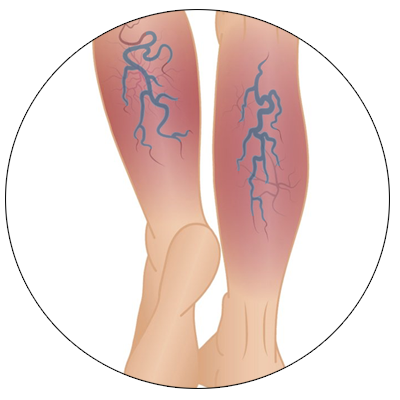
Chronic Venous Disease(CVD) affects millions of individuals worldwide, 5% of Indian population, but little is known of how it is managed in routine clinical practice. 3,4
Know more about chronic venous disease (CVD) from experts all across India
Diagnosis And Prognosis Of CVD
Different Patient Profiles Of CVD
Management Of CVD
Understanding role of Micronized Purified Flavonoid Fraction(MPFF) in medical management
RELIEF study showed that the use of MPFF improves Quality of Life among Chronic Venous Disease patients.5
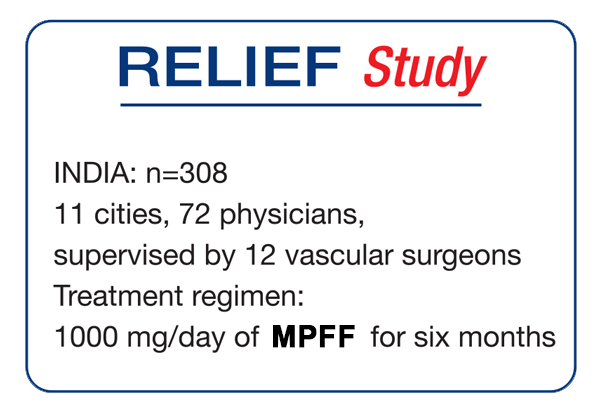
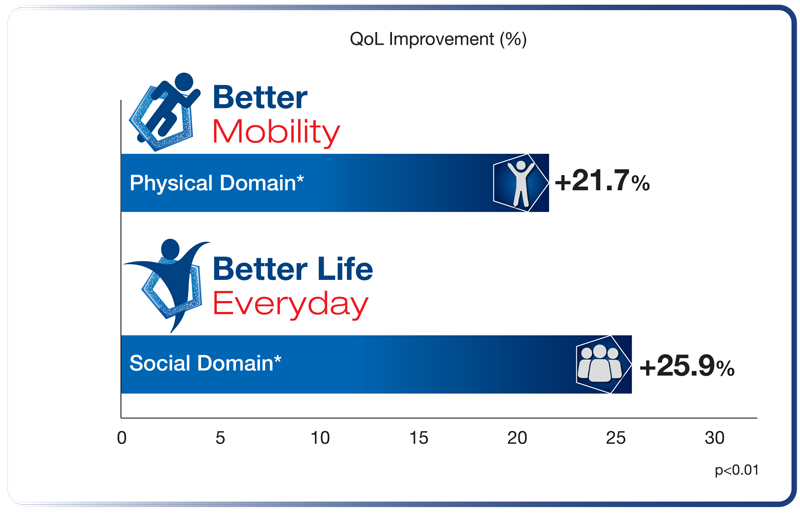
Micronized Purified Flavonoid Fraction(MPFF)
MPFF is a standard treatment for all stages of Chronic Venous Disease of CEAP classification. It is an adjunct to surgical procedures in the treatment of Chronic Venous Disease.11
MPFF treatment along with Sclerotherapy of Reticular Veins and Telangiectasias6
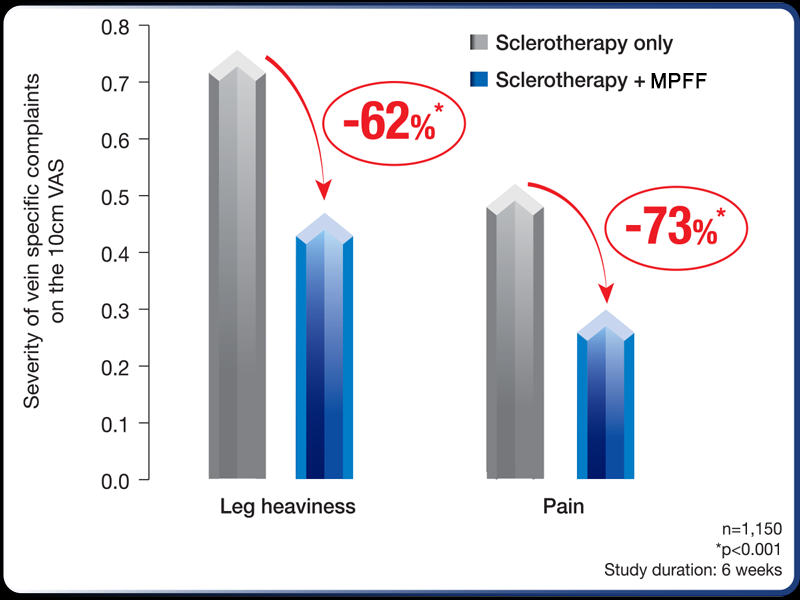
- Resolution of Venous symptoms post-sclerotherapy was greater in patients treated with MPFF compared with those undergoing sclerotherapy alone.
- MPFF treatment was associated with statistically significant decreases in mean visual analog scale (VAS) scores for leg heaviness, pain.
MPFF Reduces severity and accelerated recovery7
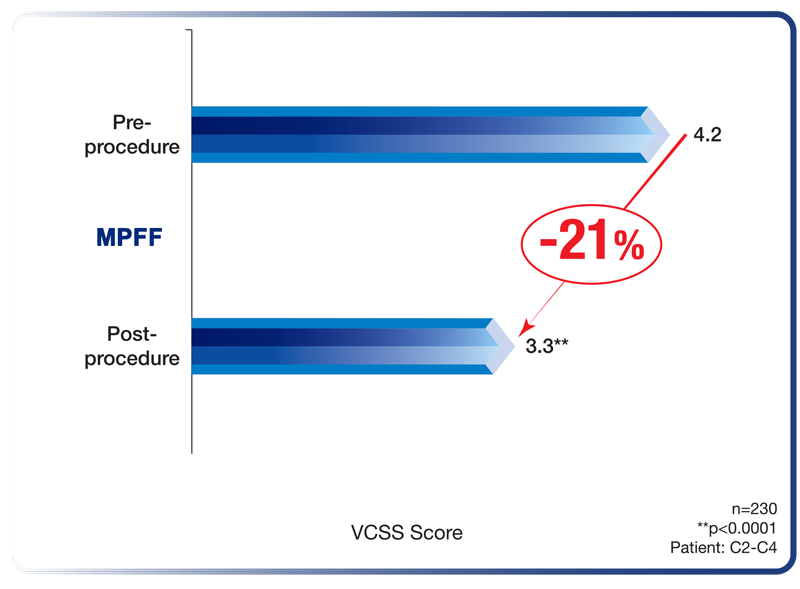
MPFF reduces severity and accelerated recovery to patients undergoing endovenous treatment (EVT) for Varicose Veins of the lower extremities.
MPFF Accelerate healing of Venous
Ulcers8,9
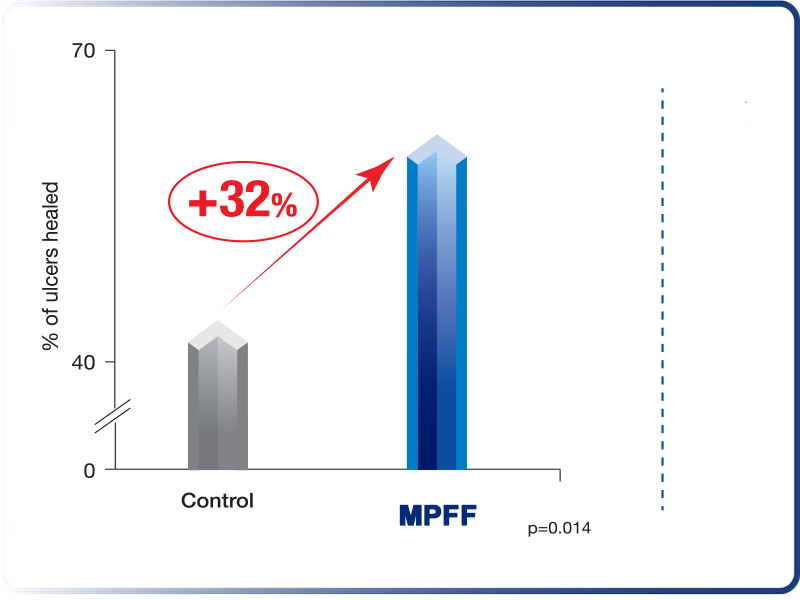

MPFF treatment accelerated Venous Ulcer healing. The chance of healing ulcer was 32% better in patients treated with adjunctive MPFF than in those managed by conventional therapy alone.
Recommended Dose of MPFF
The usual dose of MPFF 1000mg 10

References
1. Patel SK, Surowiec SM. Venous Insufficiency. [Updated 2022 Aug 1]. In: StatPearls [Internet]. Treasure Island (FL): StatPearls Publishing; 2022 Jan-. Available from: https://www.ncbi.nlm.nih.gov/books/NBK430975/. 2. Spiridon M, Corduneanu D. Chronic Venous Insufficiency: a Frequently Underdiagnosed and Undertreated Pathology. Maedica (Bucur). 2017;12(1):59-61. 3. Joseph D. Raffetto. Pathophysiology of Chronic Venous Disease and Venous Ulcers. 2017. Surg Clin N Am 4. Siddharth Mishra, Iqbal Ali, Gurjit Singh. A study of epidemiological factors and clinical profile of primary varicose veins. 2016. Medical Journal of Dr. DY Patil Vidyapeeth. 5. Pinjala R et al. Phlebology 2004;19:179-184 6. Bogachev et al. Adv Ther. 2018;35:1001-1008 7. Bogachev et al, DECISION Trial Phlebolymphology 2013;20(4):181-187. 8. Nicolaides et al. Int Angiol. 2018; 37:181-254 9. Coleridge-Smith P. et al. Eur J Vasc Endovasc Surg. 2005;30:198-208 10. Staniewska A. Bezpieczeństwo stosowania zmikronizowanej diosminy w dawkach dobowych do 2000 mg [Safety of use of micronized diosmin at daily doses up to 2000 mg per day]. Pol Merkur Lekarski. 2016
